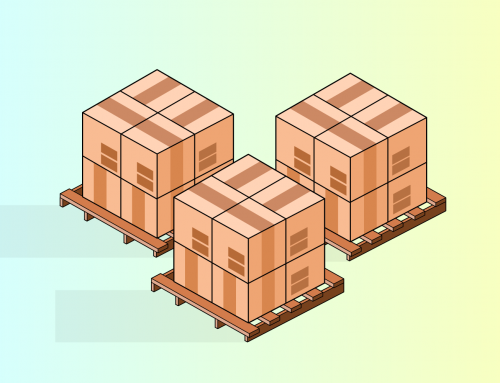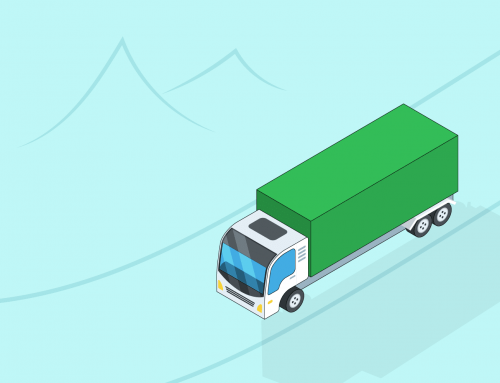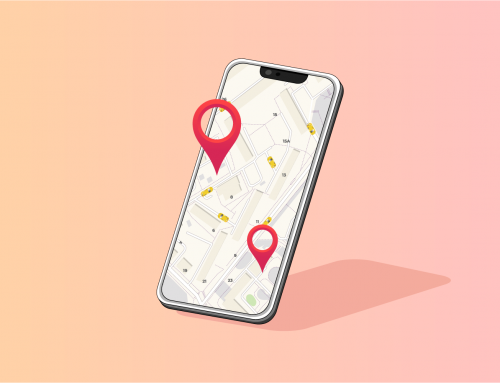Hi, I’m Geoff Runcie and I’m back with the latest episode of CPT Incoterms in the International Trade Series featuring renowned global trade expert Murdo Beaton and Abdul Mann, creator of the cloud-based export solution EdgeCTP.
If you’re new to this series, then welcome, I hope you find it useful and that you’re sufficiently inspired to go global.
In this session, Incoterms explained, we’ll be breaking down the eleven Incoterms, explaining what they mean, their application, and the benefits of using them. There’ll be eleven episodes in total so make sure to subscribe to our blog if you don’t want to miss any. Alternatively, feel free to drop me an email on Support or visit our blog.

Geoff:
Today we’ll be discussing CPT, including how and when to use it. So Murdo, what is Carriage Paid to (CPT Incoterms)?
Murdo:
CPT Incoterms stands for Carriage Paid To, and the “To” is making reference to a location that has been agreed by both parties to the transaction as to where the exporter should be responsible in terms of cost for the delivery of these subject goods. The term is normally used for aviation transport and road transport. It is not regularly used for marine transport, for which there is an equivalent which we’ll talk about later. The term actually means that the exporter is responsible for the costs of bringing the goods to a particular destination nominated by the buyer, and this destination is invariably in the country of destination.
Abdul:
OK, so the road transportation, I’ve agreed with my international buyer that I’ll be sending the goods to them. Can I identify a point that is just on the edges of an area that I know? So, for instance, I might know Britain rather well and I decide that I’m going to take it from my place to the seaport then drop it off at the seaport for them to take from there and onwards.
Murdo:
Are you referring to the seaport in the UK or are you referring to the seaport in the country of destination?
Abdul:
I would say let’s start with the seaport in the UK.
Murdo:
Now CPT Incoterms is using the word “Carriage”, and carriage here is making reference to the main carriage, and the main carriage is inevitably the leg of the transportation that takes the goods from one country to the other.
Abdul:
Oh, so it’s got to be outside of my country.
Murdo:
It has to be outside of your country and yes, it could be at a terminal or an airport entering the country of destination.
Abdul:
OK, so I could take it as far off as say the buyer’s main city or seaport, drop it there, and say from that point onwards it’s their responsibility to take it to their own door.
(Scroll down to continue…..)
Murdo:
You can indeed. If you actually take it to a point within the borders beyond the entry point of the country of destination you would then have to consider, how do I take it from the point of entry to the internal location in the country, because here the Customs Authority of that country will have an interest in goods passing through their borders and going inland without actually having been cleared at the border. So you may have to enter into providing the Custom Authorities of the destination countries with some security for the transportation to this inland destination that you are aiming for, at which you hope the goods are going to be cleared at. Commonly however for CPT, the point of destination is usually the Customs frontier of the country to which the goods are being consigned.
Abdul:
Oh OK, so in the most used examples of CPT you’re pretty much bringing it to the border and then you’re kind of leaving it there and from there onwards…
Murdo:
The buyer takes responsibility. The buyer is responsible for taking possession of them at that particular location, clearing them through their own Customs Authorities, and attending to all provisions and formalities necessary to allow these goods to enter that particular country.
Abdul:
Why would we choose that?
Murdo:
We would consider choosing that if we had no reluctance in engaging with physical logistics but we had slight reservations about engaging with Customs Authorities in the country of destination. We might be uncomfortable or choose not to enter into paying foreign customs duties and taxes, and indeed we may choose not to be responsible for the transportation of our goods after they enter that country, not having any particular control over the transport methodologies that might be used. So, on that basis for the security and safety of the goods, as far as we’re concerned, because we have no control over it beyond the entry point of the country we would say, yes we’re quite comfortable with delivering them to this point and the buyer takes them on from here.
Abdul:
OK, clearing customs and paying any duties, etc.
Murdo:
The buyer, on the other hand, might be quite comfortable with the process of clearing them through his own Customs Authorities as he may have already had shipments of a similar nature entering that country, and he may have provided certain information to the authorities that were totally appropriate to his import exercise and he may wish to continue to do that. He may not wish to allow the clearance of the goods to be attended to be a foreign entity that might in the buyer’s opinion have little knowledge of how that country’s Customs Authorities work.
Abdul:
So if I take this as a slightly different example. We looked at the other two, ExWorks where the person is responsible for loading it onto their own vehicle and making their way from the factory place. Then we looked at FCA where you agree on a point of delivery, you then deliver the goods but they are responsible for unloading it off your vehicle. As soon as the goods leave the touchpoint of the vehicle they become the buyer’s responsibility. Do we have a similar sort of situation happening with this particular Incoterm, CPT Incoterms?
Murdo:
Yes, indeed. There is a slight anomalous position here. CPT Incoterms suggests that the exporter is paying all the costs up until such time as the goods arrive at the frontier point in the country of destination. Now we then say does that mean that the exporter has total responsibility for those goods up until the time they arrive at that particular point? The answer here is no. Although the exporter is paying all the transportation costs up to the point of entry, the exporter releases himself from responsibility for the safety of the goods once they are taken into the main carriage, by whichever carrier has been nominated. Now when I say taken into the main carriage, the main carriage will usually commence in the exporter’s country. So once the goods are in the hands of the main carrier and loaded onto the unit of transport, classified and appointed for the main carriage, the exporter’s responsibility in the goods has terminated. But the responsibility for the safety of the goods whilst they are in this carriage transport mode is the buyer’s responsibility, but by that point, the exporter is still responsible for their safety until they are handed and loaded onto the main carriage, the aircraft or the road vehicle that is going to take them from one country to another. Once they are loaded onto that transport the exporter is now released.
Abdul:
So if we look at this as two legs of one journey from A to B….
Murdo:
Yes, you could almost say that there are two legs. The first leg is the domestic transportation leg. The second leg is the international transportation leg, and the international transportation leg begins once the goods are released for export at the point of exit in the exporter’s country by the Customs Authorities of the exporter’s market.
Abdul:
And is that when responsibility moves across?
Murdo:
No, the responsibility moves across after they have been loaded onto the transport unit that is going to take them through the initial leg of the international transport movement.
Abdul:
OK, Murdo let me give you an example here because I’m a tad confused. I’m running a factory and I’ve nominated a particular carrier to take these goods to the airport of the destination market, so let’s go back to my friendly country in Brazil. I’m going to be sending these to Brazil; they’re going to land in Rio De Janeiro so I’m going to be paying for the whole cost of transporting the goods to Rio De Janeiro, OK?
Murdo:
Yes.
Abdul:
So, the lorry turns up at my factory and picks it up, it goes onto their lorry, they take the goods on an aircraft, take them out of the country and to Rio De Janeiro then they touch down. At which point is the responsibility for the goods switching to the buyer?
Murdo:
The point at which they are loaded onto the aircraft before it leaves for Rio De Janeiro.
Abdul:
- So I’m responsible for taking it from my factory to the airport…
Murdo:
Yes, and loading them onto the aircraft.
Abdul:
Ok so as soon as they’ve touched down the aircraft it becomes the responsibility of the Brazilian buyer?
Murdo:
Yes.
Abdul:
OK, I’m still kind of responsible for the goods arriving safely in Rio De Janeiro?
Murdo:
You’re responsible for the costs of taking them there. You are not responsible now for their safe arrival but bear in mind that you should take all measures possible as far as you can to make sure as to their safe arrival. You cannot just simply ignore the thing that everything has been done to make sure that the goods arrive safely, not least of all that they have been properly packed.
Abdul:
So the question is why would we go for CPT then? Why would I have chosen CPT Incoterms? Is it just basically because I’m comfortable getting it to that destination market, then they can do the internal leg themselves?
Murdo:
Commonly CPT might be a term that you would consider using if in actual fact you wished to do as much as possible to ensure that the buyer gets the goods with as little distress as possible, but having said that you might not necessarily be too keen in engaging on customs clearance of these goods. The buyer may choose to consider yes, I would prefer to clear them myself but I would like you to bring them here first. So what you’re really doing is you’re bringing them to the buyer’s market and allowing the buyer to deal with all formalities in his own market.
Abdul:
Got it, thank you.
Geoff:
I hope you enjoyed this audio. If you’d like more information on international trade go to EdgeCTP. All material in this audio is copyrighted and all reproduction rights reserved by Morgan Goodwin Ltd, thank you.





